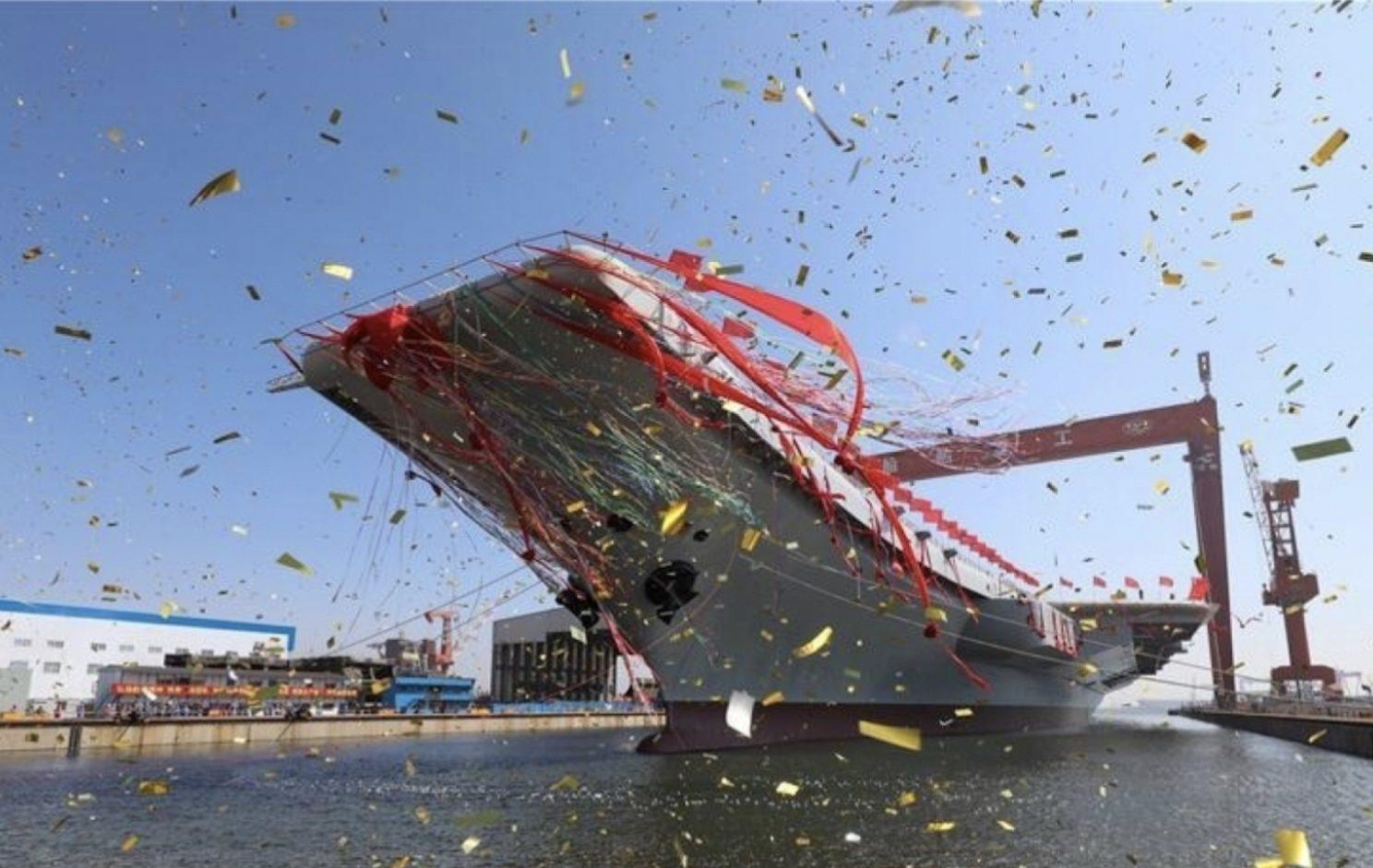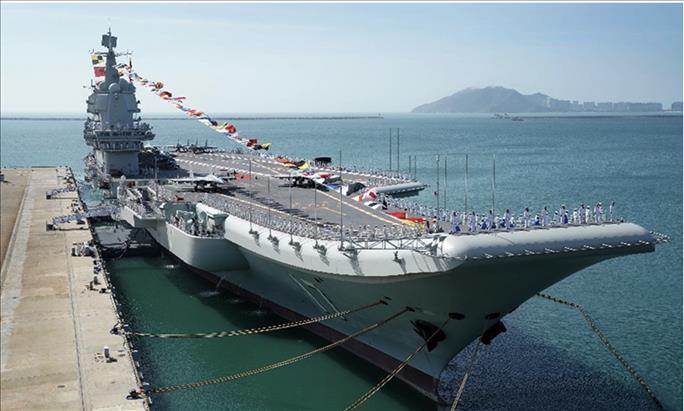
China's nuke carrier coup de grace in Taiwan Strait
China is on track to have at least four aircraft carriers by the mid-2020s, with its fourth one likely to be nuclear-powered. Work on China's fourth carrier began in 2021 , with China's Central Military Commission studying a proposal by China State Shipbuilding Corporation (CSSC) to make it nuclear fuelled.
Compared to their conventionally-powered counterparts, nuclear-powered carriers can stay at sea for much longer, carry twice the amount of aircraft fuel, 30% more weapons, and 300,000 cubic feet of additional space, which would otherwise be taken by air intakes and exhaust trunks. Nuclear power is also critical for power-intensive aircraft catapults, weapons, sensor and onboard computers.
China has also been working on key technologies for its nuclear-powered carrier. In 2019 , China General Nuclear Power Group (CGN) invited bids for a contract to build a nuclear-powered vessel as an experimental platform to test marine nuclear propulsion. In 2018 , China announced plans to build its own nuclear-powered icebreaker with Russian technical assistance.
China is also working on Electromagnetic Aircraft Launch Systems (EMALS) , which use a surge of electricity to generate a strong electromagnetic field to launch aircraft. It is reportedly easier to operate, gentler on airplanes and capable of launching more planes into the air in a shorter period than conventional steam catapults.
The impetus for China's nuclear-powered carrier program can be traced to 2018 , when CSSC announced that such an asset would help the People's Liberation Army–Navy (PLA-N) realize its strategic transformation and combat-readiness capability in deep waters and open oceans by 2025.
Presently, China operates two conventionally-powered carriers, the Type 001 Liaoning, which was known as the ex-Soviet Varyag and commissioned in 2012, and the fully indigenous Type 002 Shandong, which was commissioned in 2017. A third conventional carrier, the Type 003, is currently under construction and likely to enter service in 2024.
A Harvard Kennedy School Belfer Center analysis posits that China's growing carrier force, alongside its developments in other military technologies, particularly anti-access/area-denial (A2/AD) capabilities, has raised the possibility of the US losing a limited war over Taiwan.

Commissioning ceremony for China's new aircraft carrier the Shandong, Sanya, Hainan, China, December 17, 2019. Photo: Facebook
As a result, the US could be forced into escalating a limited conflict over Taiwan into a larger regional war. According to the analysis, a Chinese attack on Taiwan would most likely succeed before the US could move enough assets into the area.
Even if the US manages to move enough of its forces to assist Taiwan, they would not be sufficient to affect the outcome. That said, China now has the capabilities to deliver a fait accompli in the Taiwan Strait before the US decides how to respond.
China's carrier fleet can complement its land-based fighter aviation in establishing air superiority over the Taiwan Strait. In addition, these carriers can be deployed off Taiwan's eastern coast, allowing for strikes on Taiwan's defenses stationed on its mountainous eastern flank.
China's carriers would operate in a secure umbrella, defended against Taiwanese or US attacks by DF-21D carrier killer missiles, carrier-based fighters, surface warships and submarines.
Taiwan's defense is based on a porcupine strategy of asymmetric defense to prolong a potential conflict until US forces intervene. As such, Taiwan would be heavily defended with anti-ship missiles, anti-tank missiles and air defenses to hold out long enough for US intervention.
However, Taiwan cannot hope to hold out indefinitely without US assistance. Hence, its defensive posture is premised on a US intervention, which the US has not been clear about due to its policy of“strategic ambiguity” over Taiwan, which both mollifies China and prompts greater efforts from Taiwan to harden its own defenses.
The question facing Taiwan and the US is not whether they can fight together, but how they can do so despite policy constraints and China's growing might. The launch of a nuclear-powered fourth aircraft carrier will tilt that military balance even more in China's favor.

Legal Disclaimer:
MENAFN provides the
information “as is” without warranty of any kind. We do not accept
any responsibility or liability for the accuracy, content, images,
videos, licenses, completeness, legality, or reliability of the information
contained in this article. If you have any complaints or copyright
issues related to this article, kindly contact the provider above.

















Comments
No comment